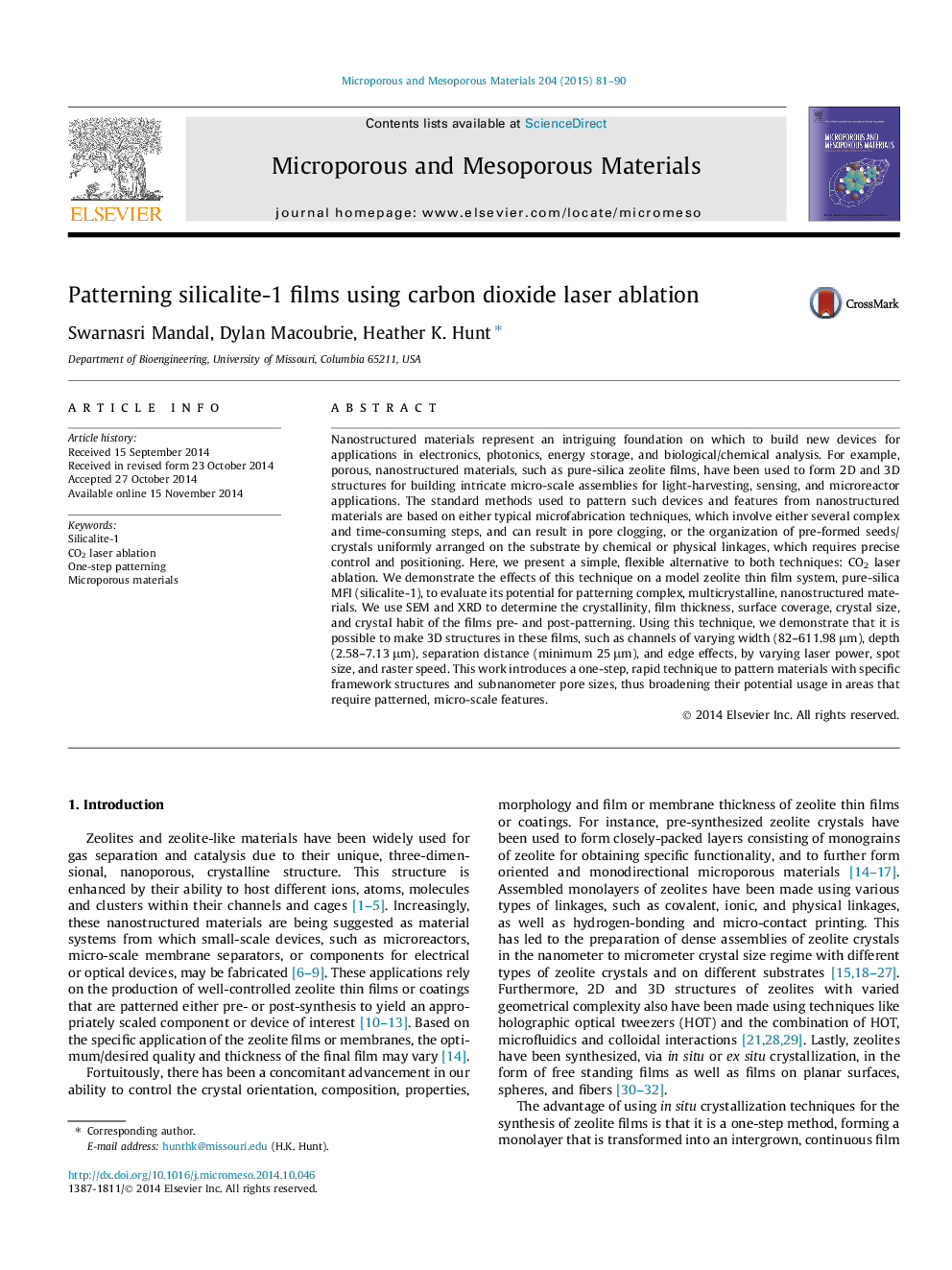| Article ID | Journal | Published Year | Pages | File Type |
|---|---|---|---|---|
| 72736 | Microporous and Mesoporous Materials | 2015 | 10 Pages |
•Silicalite-1 films of different thickness were synthesized by varying the crystallization time.•CO2 laser ablation was used for micropatterning silicalite-1 films.•Channels and features of different widths and depths were created by varying the laser power and raster rate.•Regions of different density were formed based on ablation conditions.•CO2 laser ablation was demonstrated as a single-step, direct-writing method for micropatterning zeolite thin films.
Nanostructured materials represent an intriguing foundation on which to build new devices for applications in electronics, photonics, energy storage, and biological/chemical analysis. For example, porous, nanostructured materials, such as pure-silica zeolite films, have been used to form 2D and 3D structures for building intricate micro-scale assemblies for light-harvesting, sensing, and microreactor applications. The standard methods used to pattern such devices and features from nanostructured materials are based on either typical microfabrication techniques, which involve either several complex and time-consuming steps, and can result in pore clogging, or the organization of pre-formed seeds/crystals uniformly arranged on the substrate by chemical or physical linkages, which requires precise control and positioning. Here, we present a simple, flexible alternative to both techniques: CO2 laser ablation. We demonstrate the effects of this technique on a model zeolite thin film system, pure-silica MFI (silicalite-1), to evaluate its potential for patterning complex, multicrystalline, nanostructured materials. We use SEM and XRD to determine the crystallinity, film thickness, surface coverage, crystal size, and crystal habit of the films pre- and post-patterning. Using this technique, we demonstrate that it is possible to make 3D structures in these films, such as channels of varying width (82–611.98 μm), depth (2.58–7.13 μm), separation distance (minimum 25 μm), and edge effects, by varying laser power, spot size, and raster speed. This work introduces a one-step, rapid technique to pattern materials with specific framework structures and subnanometer pore sizes, thus broadening their potential usage in areas that require patterned, micro-scale features.
Graphical abstractFigure optionsDownload full-size imageDownload as PowerPoint slide
